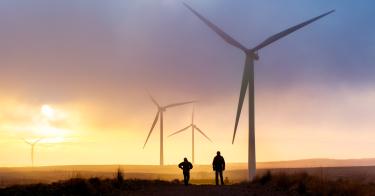In his speech on Jan. 27—a day the White House dubbed “climate day”—President Biden said his administration will take an aggressive, top-down approach to addressing climate change.
As he added one more executive order to his growing mountain of federal directives, Mr. Biden underscored, “It’s a whole of government approach to put climate change at the center of our domestic, national security, and foreign policy.”
Rather than backing an “all of the above” energy innovation approach that we know works much better, Mr. Biden pledged to push an “all of the government” approach that will no doubt impose huge direct and indirect costs on society, undermining overall economic health—not least by slowing growth.
The just-released Heritage Foundation’s annual Index of Economic Freedom shows that there is a healthier, better way than Mr. Biden’s command-and-control approach.
>>> The Right Way to Ensure a Cleaner Environment
The Index offers a timely reminder: Free-market principles that have proven to be the key to economic success also can deliver environmental success and point the way to a pragmatic approach that advances the two important policy objectives.
Economic freedom safeguards the environment by reinforcing environmental stewardship. Countries with greater economic freedom tend to fare better on protecting the environment than countries with more intrusive, government-directed environmental governance.
The most remarkable improvements in clean energy use and energy efficiency over the past decades occurred not as a result of government command and control, but because of advances in economic freedom. Those advances included enhanced regulatory efficiency and market openness in the private sector facilitated by greater degrees of dynamic trade.
Perhaps to the surprise of anti-free trade environmentalists, according to the World Trade Organization, “trade openness can help efforts to mitigate and adapt to climate change, for example by promoting an efficient allocation of the world’s resources (including natural resources), raising standards of living (and hence the demand for better environmental quality) and improving access to environmental goods and services.”
Indeed, around the globe, economic freedom reinforced by freer trade has been shown to increase the capacity for environmentally friendly innovation. The positive link between economic freedom and higher levels of innovation ensures greater capacity to cope with environmental challenges.
The welcome outcome out of this vital interplay is a virtuous cycle of investment, innovation (including in greener technologies) and more dynamic, inclusive economic growth.
It’s clear that in crafting practical and real solutions, policymakers shouldn’t ignore free markets that unleash innovations to solve climate problems in a pragmatic and measurable way. Dynamic private markets incentivize efficiency by rewarding and empowering investors, innovators and inventors for coming up with better ways to achieve more with less.
Policy efforts aimed at imposing stricter environmental standards through a global regulatory body run great risk of being not only fruitless, but counterproductive as well. They undercut the economic growth necessary for greater efforts to protect the environment.
>>> WATCH: A First Look at Biden’s Energy and Climate Policies
More often than not, regulations tend to lag behind the pace of innovation, market trends, and consumer preferences. Thus, governments end up slowing economic and environmental progress.
Such regulations only serve as feel-good, virtue-signaling actions, without generating real “change” that could mitigate climate change and its possible negative impacts. Countries in general—but developing countries in particular—are able to protect their environment only if their economies prosper and the standard of living of their citizens eventually improves.
Economic growth and environmental governance are not mutually exclusive. Both prosperity and the environment can surely flourish side by side.
As the 2021 Index reminds us once again, it is the freer economies—those that uphold the rule of law, private property rights, limited government, regulatory efficiency, and market openness—that do far better job of achieving more dynamic growth while creating a healthier, cleaner natural environment.
This piece originally appeared in The Washington Times





